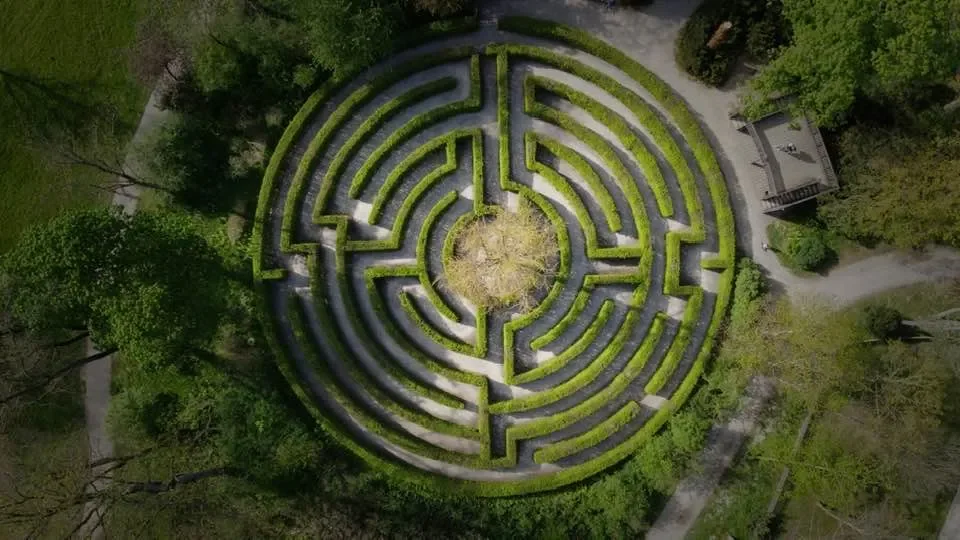The Looping Days
The trauma fooled me with its ways,
the looping nights and looping days.
Hypervigilance. Please hold back.
Letting loose. The falling stack.
The living trauma. The reliving too.
It’s so difficult to know what to do.
I have read a thousand books,
a thousand fish, a thousand hooks.
Along the way, I found some gold,
as I am learning a new way to hold.
To hold myself within my space,
my own universe, with my grace.
From Trauma to Wholeness: How My Mind Mirrors the Quantum World
For much of my life, I lived inside a state of constant alertness. My body learned to scan for danger long before my mind could make sense of what had happened. Trauma trained my nervous system to stay awake to every possible threat. Even years later, in moments of safety, the vigilance remained. My thoughts spun like bright wires, looping through fears, searching for something to control.
In therapy and self-study, I began to see that my thoughts were not enemies. They were signals, energy, movement. They were not wrong, just misunderstood. This was the beginning of a quiet revolution inside me, one that mirrors what modern physics began discovering about the universe itself.
Recently, I’ve been reading Paul Levy’s The Quantum Revelation, a book that bridges quantum physics and consciousness in ways I find both fascinating and deeply validating. His description of thought as something that behaves like a quantum process—where the observer and the observed are inseparable—resonated powerfully with my own experience of trauma.
Quantum physics shows that the act of observing changes what is seen. Carl Jung said the same of the psyche: nowhere does the observer disturb the experiment more than in psychology. When I read that, I realised it described the inner landscape of trauma perfectly. The moment I tried to fix or silence my thoughts, I only amplified them. The harder I watched, the more restless they became.
The shift came when I began to see thought not as something to control but as a living process. Just as in the quantum field, where particles move as waves of potential, my thoughts were fluid events rather than fixed objects. The mind and body were not separate realms. They were one field, expressing itself through awareness, emotion, and physical sensation.
David Bohm, a physicist whose work Levy explores in detail, described this awareness as proprioception of thought—the mind’s ability to sense its own movement, just as the body senses motion. When that happens, thinking begins to relax. The loops soften. The space between thoughts starts to breathe again.
In trauma, thought forgets that it is thought. It creates fear, then believes that fear is real. It runs from its own creation. Healing, for me, has meant remembering that thought and thinker are one movement. When I can witness that movement without judgment, something loosens. I no longer stand outside my mind, trying to manage it. I become part of its natural flow.
In my role as a peer supporter with lived experience at a renowned trauma clinic in London, I meet others who carry deep pain. I see in them the same paradox that quantum physics points to in the universe: separation is only apparent. Beneath the surface, everything is connected. Every person’s story, every moment of suffering, belongs to one shared field of awareness.
What I’m learning is that healing is not about silencing the past but integrating it into a wider view of reality. Just as quantum theory shows that the universe is not made of fixed objects but of relationships, my own healing depends on how I relate to myself. The old dualistic habits—me versus the world, safety versus danger, light versus dark—begin to dissolve. What remains is a sense of wholeness that includes everything.
I’ve been reflecting on the image of a seed meeting resistance in the soil. It reminded me that pressure, darkness, and challenge are not obstacles to growth—they are the conditions that allow it to rise toward the light. In the same way, trauma has been the ground of my awakening, helping me learn to grow inside my own life.
The mind, like the quantum world, is alive, relational, and creative. It does not exist apart from the universe but within it, shaping and being shaped by it. To heal is to remember that we are participants in the ongoing creation of our experience. The boundary between inner and outer begins to fade. Life becomes one continuous field of meaning.
Healing, then, is not about changing what happened but changing how we see it. When I can see my thoughts as waves in a larger ocean, they no longer define me. They reveal me. And in that moment of recognition, the universe itself seems to breathe with me.
Highly Recommended: The Quantum Revelation by Paul Levy
If you're interested in exploring these ideas further, I highly recommend Paul Levy's The Quantum Revelation. It's available in both paperback and audiobook formats:
🎧 Audiobook on Audible
This book offers a profound synthesis of science and spirituality, providing insights that have deeply resonated with my own journey.
Photo Ben Mathis Seibel Unsplash
